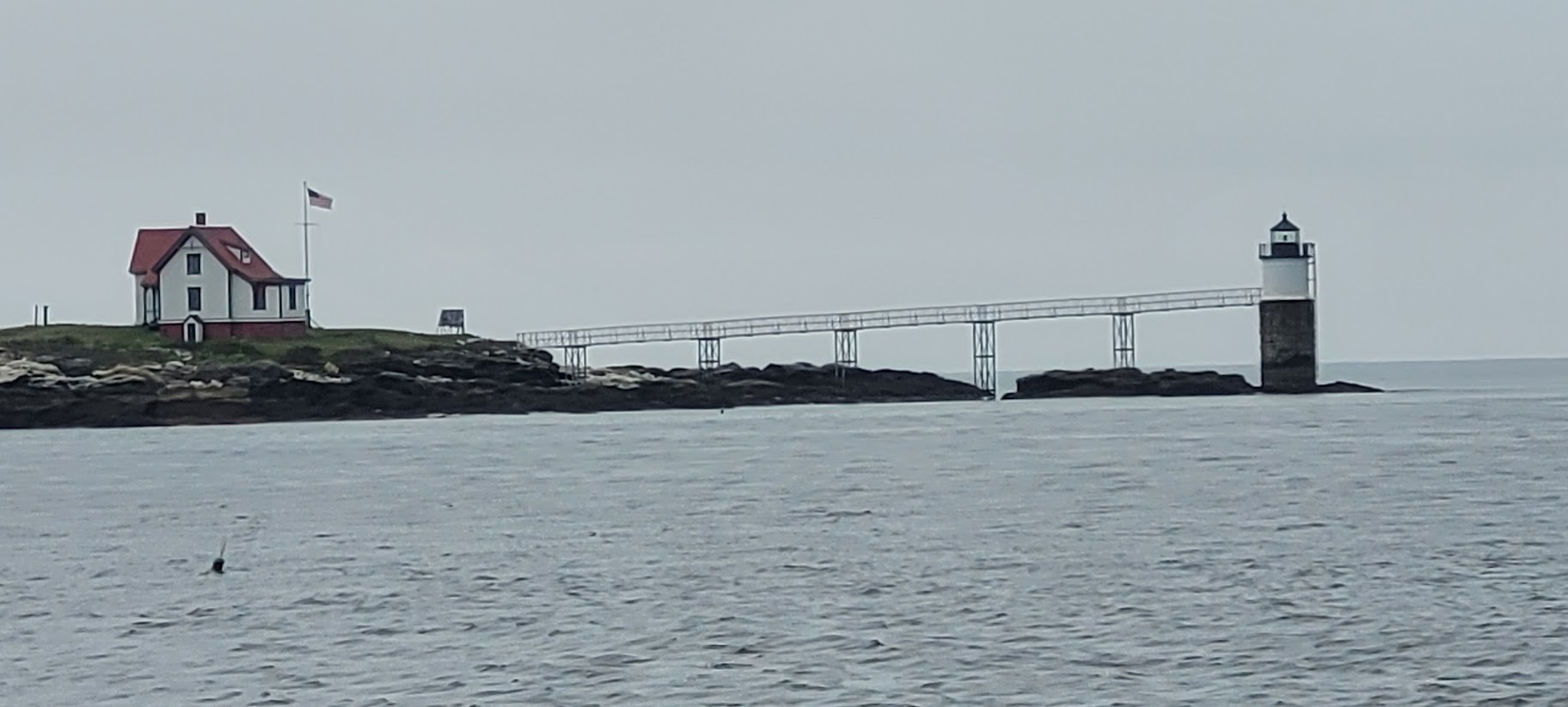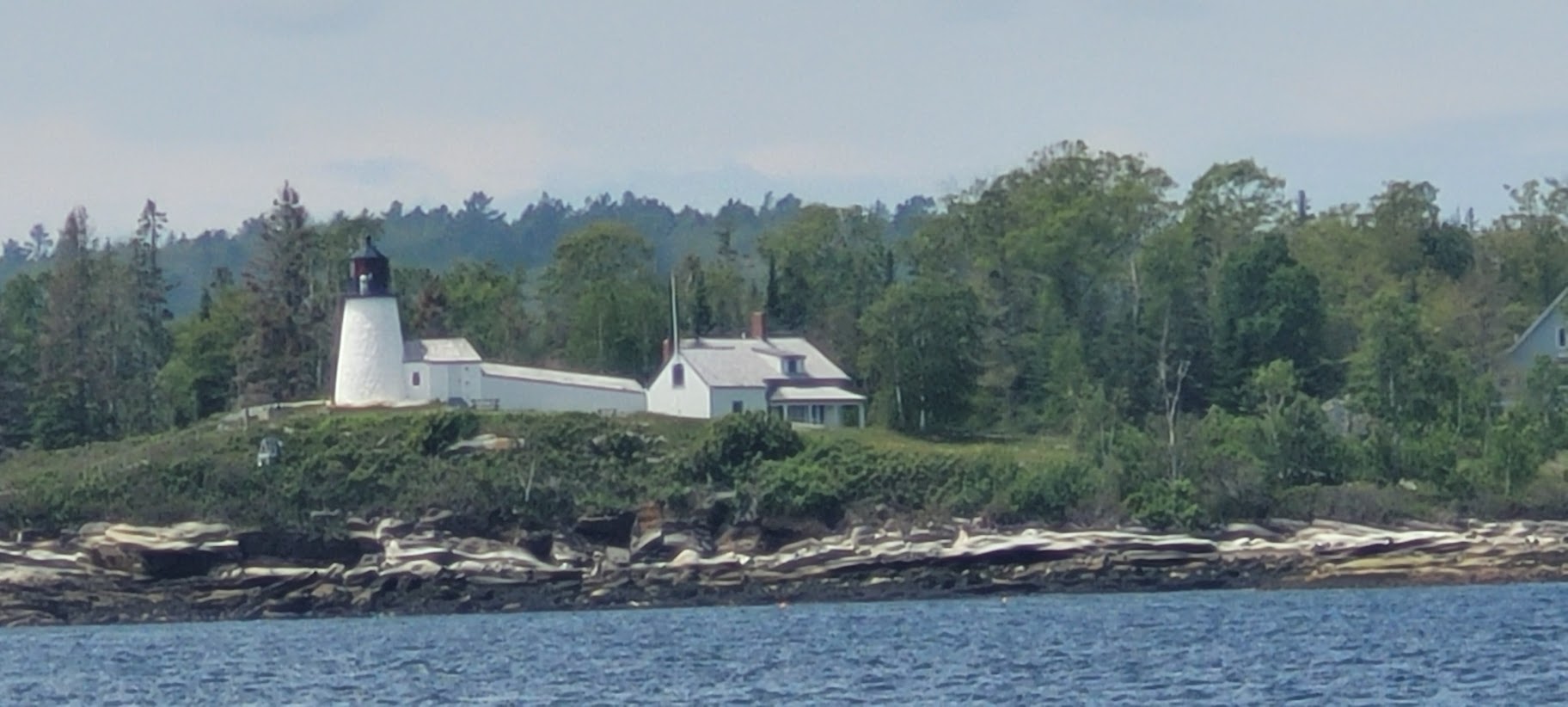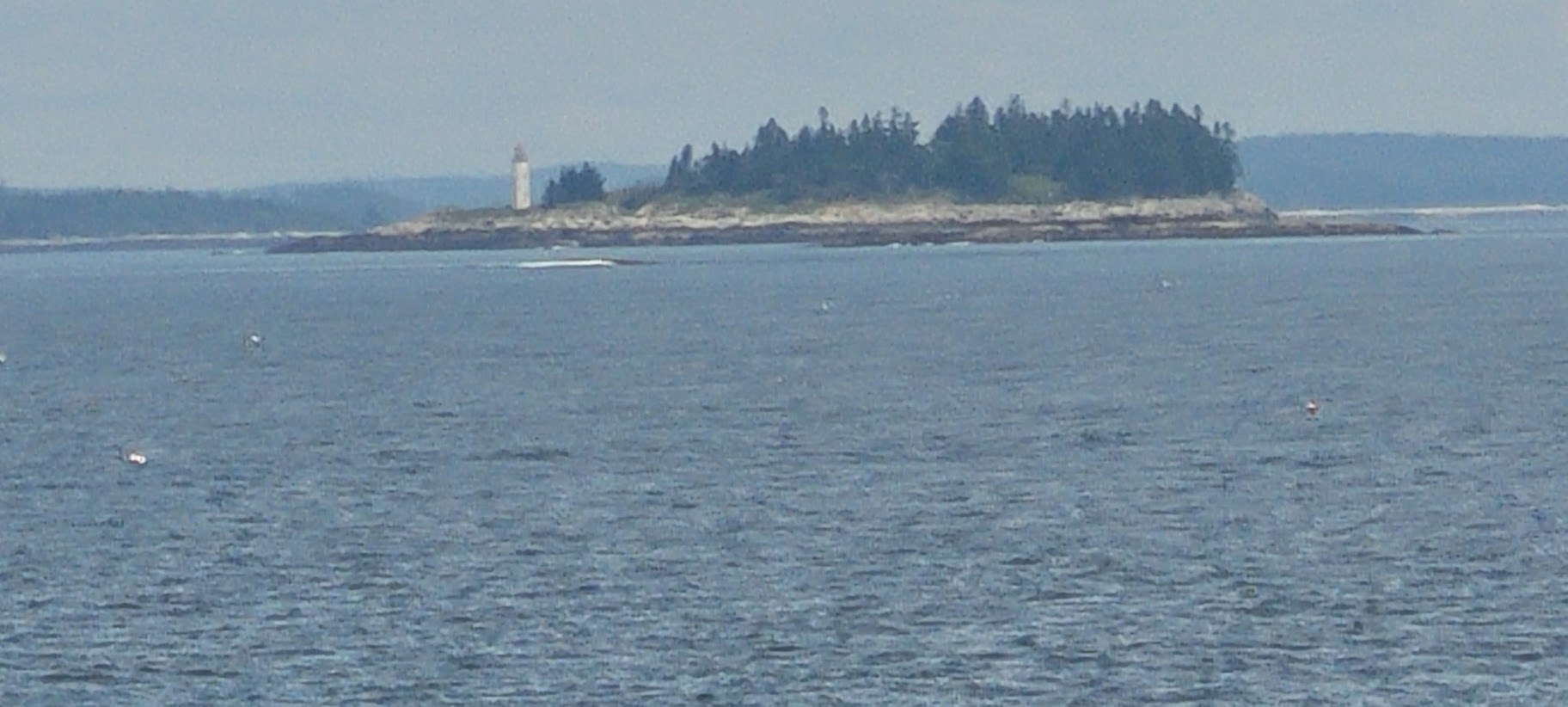Lighthouses: Maine is home to over 60 lighthouses along its picturesque coastline, more than any other state in the United States. These lighthouses serve as iconic landmarks and contribute to the state’s maritime heritage. The Portland Head Light in Cape Elizabeth is Maine’s oldest lighthouse. It was commissioned by President George Washington in 1791 and has been guiding ships along the rocky coast for over two centuries. Maine is home to several remote and isolated lighthouses. One example is the Matinicus Rock Light Station, located on a small rocky island over 18 miles off the coast. It is only accessible by boat or helicopter. On our tour we spotted 3 of those lighthouses Ram, Burnt, and Pemaquid Point.
Pemaquid Point Lighthouse is located on the scenic Pemaquid Peninsula in Bristol, Maine. It sits atop a rocky promontory jutting out into the Atlantic Ocean, offering panoramic views of the surrounding coastline. The original Pemaquid Point Lighthouse was established in 1827. However, due to erosion and structural issues, it was replaced with the current tower in 1835. The lighthouse was manned by keepers until it was automated in 1934. The lighthouse originally had a fixed light that was visible for 14 miles. Today, the light emits a white flash every six seconds and has a focal plane height of 79 feet above sea level. It aids mariners in navigating the rocky coast and is an active aid to navigation.
Ram Island Lighthouse was established in 1905 to guide maritime traffic and vessels entering Portland Harbor. The construction of the lighthouse was prompted by the increasing shipping activities in the area. The lighthouse tower is a cast iron cylindrical structure with a height of 36 feet. It was built on a granite foundation and stands at an elevation of 61 feet above mean high water. The tower is painted white with a black lantern room and a red roof. In 1959, the lighthouse was automated, and the last keeper was removed. The light’s characteristic was changed to a flashing white light every five seconds. In 1965, Ram Island Light was deactivated, and its navigational duties were taken over by a nearby automated beacon on the Portland Breakwater. Ram Island Lighthouse has undergone restoration and preservation efforts in recent years. Ram Island and its lighthouse are privately owned, and access to the island and lighthouse is restricted. There are no public tours or facilities available on the island.
Burnt Island Lighthouse was established in 1821 and is one of the oldest original lighthouses in Maine. It was built to guide maritime traffic entering Boothbay Harbor and to warn ships of the dangerous rocks and ledges in the area. The lighthouse tower is a white, cylindrical brick structure with a height of 30 feet. The tower is attached to a two-story keeper’s house, which provided living quarters for the lighthouse keepers and their families. The lighthouse originally housed a fourth-order Fresnel lens, which emitted a fixed white light. The original lens has been replaced with a replica, while the original lens is on display at the Maine Maritime Museum in Bath. The keeper’s house is painted white with black shutters and a red roof. Museum and Interpretive Center. Today, Burnt Island Lighthouse is operated as a living history museum and interpretive center. 

